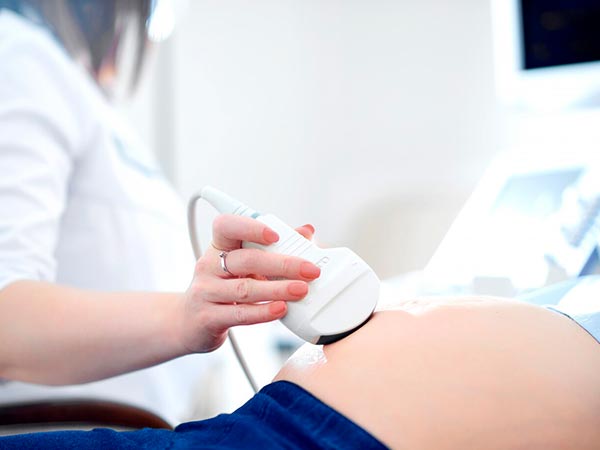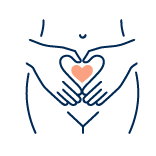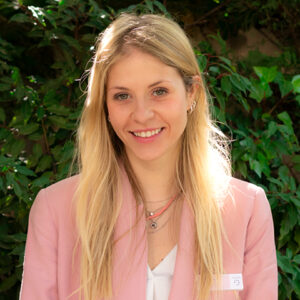ROPA Method. Lesbian, bisexual and transgender maternity
The ROPA method (Reception of Oocytes from a PArtner) is a type of in vitro fertilisation that allows a couple of two women to share motherhood and actively participate in the process, one provides her egg and the other will gestate their child.
Would you like us to study your case?
What is the ROPA method?
The ROPA method is an in vitro fertilisation (IVF) treatment adapted to the reproductive needs of lesbian, bisexual or transgender women.
As its acronym indicates, the ROPA method consists of the “Reception of Oocytes from a PArtner”, that is to say, one woman provides the oocytes that will be inseminated with sperm from a donor, also considered as a genetic mother, and the other woman will be the recipient or gestational mother of the baby. In this way, both women participate in the process, share their motherhood and play an essential role in the success of the treatment.
At Tambre, we perform the ROPA method with every guarantee, as it represents an important step forward in terms of equality and recognition of family diversity, made up of female, bisexual and transgender couples.

How is the ROPA method performed?
At Tambre we design a treatment adapted to the cycle of the two women in the couple, following the following process:

First visit
On the first visit to Tambre, the medical team will carry out a fertility study of both women.
This will allow us to propose a treatment for personalised stimulation and follicular puncture for the mother who donates her eggs, and another individualised treatment to prepare the endometrium and carry out the transfer for the recipient.
The choice of which woman donates the eggs and which one becomes pregnant is the decision of the couple, while always considering medical advice.

Start of treatment
On day 2 or 3 of the onset of menstruation, we perform a basal ultrasound of the donor woman to confirm the start of hormonal treatment.

Personalised ovarian stimulation
For approximately 10 days, the woman who provides the eggs undergoes a personalised hormonal treatment to stimulate the maturation of several ovarian follicles.

Control scans
During the 10 days of hormonal treatment, we carry out control ultrasound scans every 2 or 3 days to check follicular growth and schedule the best time to obtain the eggs.

Ovulation induction
When we observe from the ultrasound that several ovarian follicles have the optimal development, it is then the moment to trigger ovulation and 36 hours later the follicular puncture is scheduled so we can obtain the eggs.

Follicular puncture
This process consists of the aspiration of the follicular fluid which contains the eggs. Under sedation, a needle is inserted vaginally and then guided by ultrasound.

Semen capacitation
At the same time, the sperm sample from the selected donor is prepared in our Andrology laboratory.

In vitro fertilisation and embryo culture
The mature oocytes obtained after follicular puncture are fertilised with the sperm, usually using the ICSI technique (intracytoplasmic sperm injection).
The embryos obtained will normally be kept in culture in the laboratory incubator until they reach the blastocyst stage (day 5 of evolution) in order to have the best rates of pregnancy and minimise twin gestation.

Implantation support (progesterone)
While this is happening, the woman who will carry the pregnancy receives a different treatment from her partner.
In order to promote the growth of the endometrium so that it acquires the appropriate thickness and appearance for the implantation of the embryo, the pregnant mother is treated with oestrogens and progesterone. A natural cycle preparation can also be performed.

Embryo transfer
Embryo transfer consists of implanting the best quality embryo in the uterine cavity (usually one embryo is transferred). This is a simple, painless and quick process that does not require anaesthesia or special care.

Pregnancy test
10 days after the transfer (beta wait), the recipient of the embryo will undergo a beta-hCG test to confirm if she is pregnant.
The ROPA method
It allows women who are partners to participate and share together in the whole process of motherhood.
Recommendations for the ROPA method
The ROPA method is an IVF process designed exclusively for lesbian, bisexual or transgender couples. Although it is up to the couple to decide which role each of the women will assume (providing the egg and carrying the baby), it is also important to take medical advice to make the decision based on different aspects and recommendations:
-It is recommended that the woman who provides the eggs be the younger of the two, since, with age, and especially after the age of 35, the quality of the eggs worsens.
-It is important that she has a good ovarian reserve, in order to obtain several good-quality oocytes.
-It is advisable to make sure that the mother providing the eggs has no history of genetic diseases, we can carry out genetic analyses, such as karyotyping, to find this out.
-It is necessary to check that the recipient mother’s uterus is in optimal condition.
-It is also important to carry out a pre-conception consultation to assess the woman’s general health.
Another important aspect of the ROPA method is the choice of sperm donor. At Tambre we have our own sperm bank and we ensure that the donation process is optimal. The sperm is chosen based on the phenotypic and immunological characteristics of the couple.
In terms of legal requirements, both women must sign an informed consent form before starting the ROPA method.
It must also be taken into account that the embryos belong to both women. Therefore, if the couple wishes, the embryos can be transferred to either of the two women in the couple.

Why choose Tambre to perform the ROPA method?

Pregnancy rate
Because of our pregnancy rate: between 50-60% (to be assessed on a case-by-case basis according to age).

45 years of experience
Because we have a highly specialised team with over 45 years of experience in fertility treatments.

Personalised treatments
We carry out personalised ROPA method treatments for both women in the couple.

Special care
Because of the special care we take of our donors. We carry out an exhaustive medical, psychological and genetic selection process to detect hereditary diseases in each donor.

Fenomatch biometric technology
We are pioneers in the use of biometric Fenomatch technology to find the best sperm donor, and to achieve the highest physical similarity and maximum resemblance in eye colour, hair, complexion and race.

Artificial Intelligence
Artificial Intelligence, using GERI® Time Lapse technology, is used to select the best embryo with the best chances of implantation and pregnancy development.

We care for emotional well-being
We take care of emotional well-being. We know that fertility treatment involves a rollercoaster of emotions. That is why Tambre has a Psychology Unit to provide emotional support to patients who need it.
Personalised Counselling Unit
Our Personalised Counselling Unit will support you throughout the process to answer any questions you may have and to make you feel supported at all times.
Specialists in Advanced Reproductive Medicine
We are pioneers in assisted reproduction in Spain and Europe.
45 years of medical excellence.
We design tailor-made treatments.
- State-of-the-art assisted reproduction laboratory.
- Our own andrology laboratory.
- RI Witness™ for the safety and traceability of gametes.
- GERI®: Embryo Incubator®.
- Fenomatch, we find the right egg donor and/or sperm donor and match them with you.
- Zymot-ICSI (Chip Fertile), selection of the best sperm before ICSI.
- You will have your own gynaecologist and nurse, except for emergencies, and the same medical team will follow your case in depth and attend you from the beginning to the end of the treatment.
- You will have a consultant from our Specialised Tambre Care team who will support you and answer any question you may have throughout the whole process.

Dreams come true
Real stories like yours

¡Aitziber y Nadjhibia nos presentan a Mateo!
“Tenemos que tener mente positiva y saber que estamos en manos de buenos profesionales”
Leer mas

¡Benedetta y Jili ya están esperando a su bebé!
"Si el instinto te dice que una clínica te hace sentir bien, entonces es esa"
Leer mas
We stay with you
Our support team is always at your side for whatever you need
Shall we call you?
Our support team is always at your side for whatever you need
Or send us an email to atpaciente@clinicatambre.com







